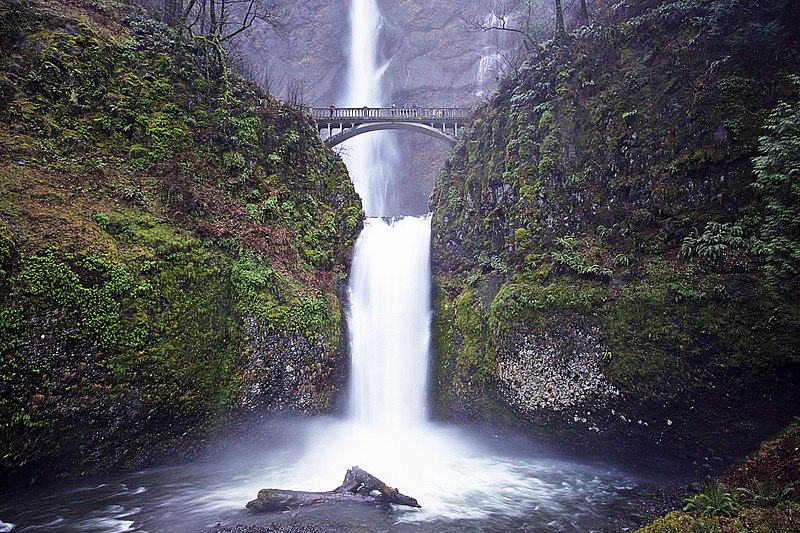
Multnomah Falls Facts
- The serenely breathtaking Multnomah Falls remains another of those stunning natural features that few people outside of its region known about. However, in that region, the cascade nonetheless forms one of the most often visited tourist sites.
- In order to facilitate the enormous volume of foot traffic, observation decks have been constructed in several locations around the feature. Thus, with the much greater ease of access, more than two million people visit the wonder of Nature each year.
- Evidence indicates that local Native American tribes knew of the site for centuries prior to the arrival of outside explorers. The Lewis and Clark expedition, in 1805, became the first known non-indigenous individuals to discover the gorgeous site.
- The magnificent Multnomah Falls itself derives its distinctive name from one local group, named the Multnomah. The beautiful location also holds great significance to the members of the tribe, including forming part of their tribal mythology.
Related Articles
Multnomah Falls Physical Description
Perhaps surprisingly to some, the magnificent Multnomah Falls ranks as the tallest waterfall in its area. The awesome cascade, comprising a two-tier fall, has an overall height measuring roughly 620 ft. The upper section of the cascade comprises the majority of that, though.
In all its visual splendor, that upper section measures a total of about 542 ft (165 m) in height. The lower section, however, regardless of its visual appeal, only measures a total of 69 ft (21 m). A small decline equaling roughly 9 ft (3 m) also separates the two sections.
Despite its great height, the feature has a comparatively narrow width. In fact, this dimension of Multnomah Falls averages on 10 ft (3.05 m) throughout most of the year. Finally, these factors combine to provide it with an average flow rate of 150 cu ft/s (4.2 m3/s).
Multnomah Falls Location, History, and Formation
The supremely awe-inspiring geological feature known as Multnomah Falls formed in what now constitutes the state of Oregon, in the United States, in North America. Presently, visitors to the area can access the natural wonder via the Historic Columbia River Highway.
Numerous pieces of geological evidence also indicate that this marvelous cascade originally formed about 15,000 years ago. This fortuitous formation occurred as a result of the gargantuan period of activity known as the Missoula Floods, at the end of the last ice age.
But, separating Multnomah Falls from the majority of other waterfalls is the primary source of its water. Unlike most similar features, it doesn’t have runoff or rain as its major source. Although these do add to the flow, most of its water originates in underground springs.
Features Sharing Its Region
Check out our other articles on 6 Mysterious Natural Phenomena, Oilbird, Milford Sound, Wallace’s Flying Frog, Honeysuckle, Spiny Bush Viper, Spotted Handfish, Goliath Beetle, European Hornet
